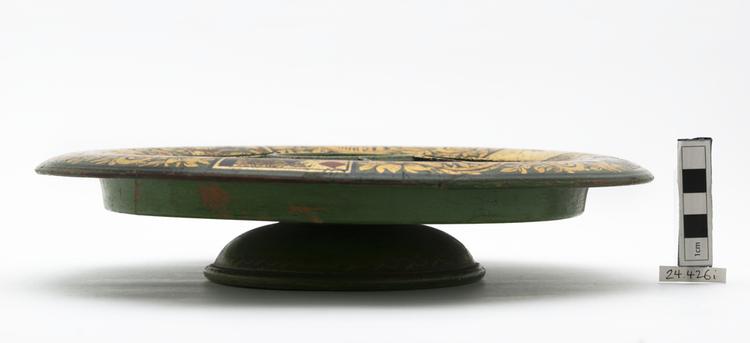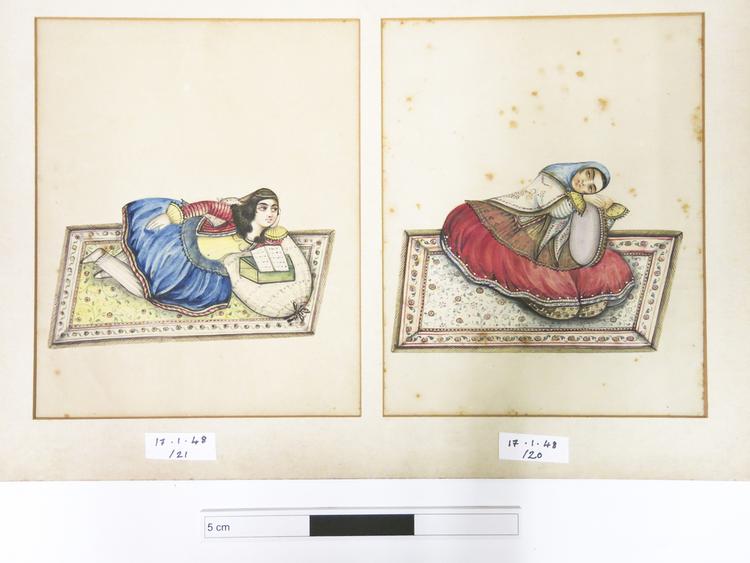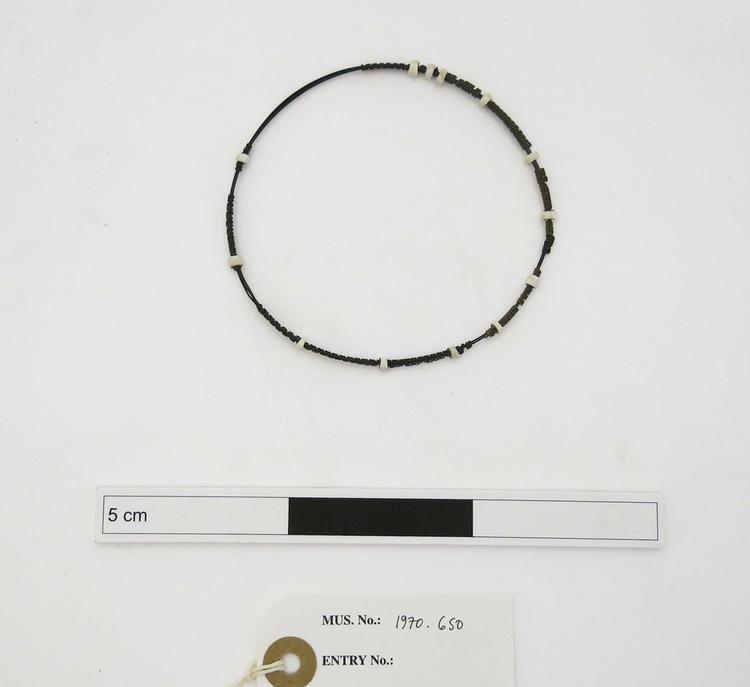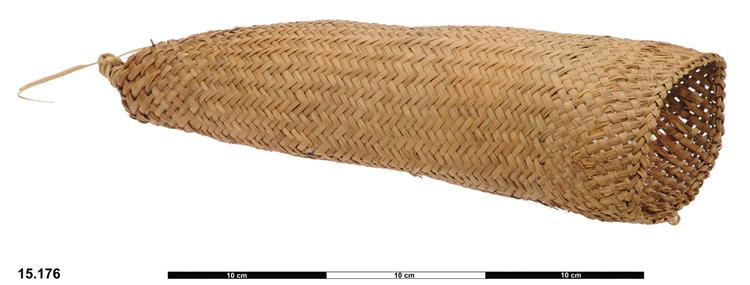
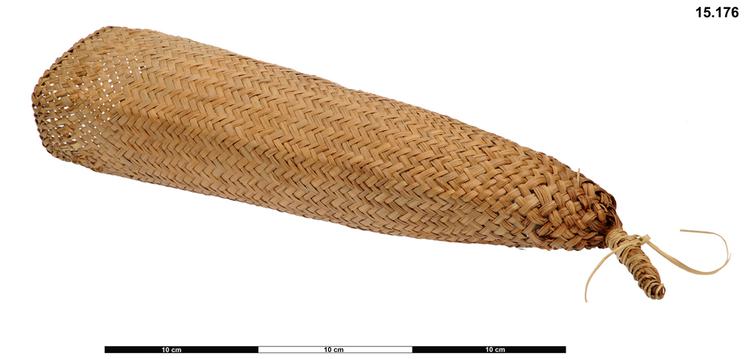
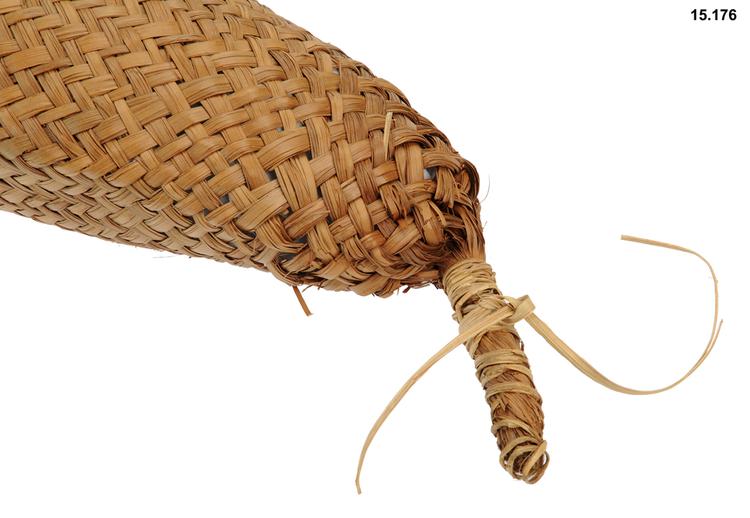
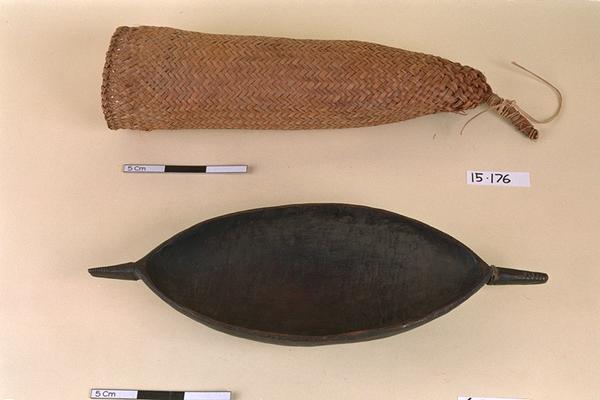
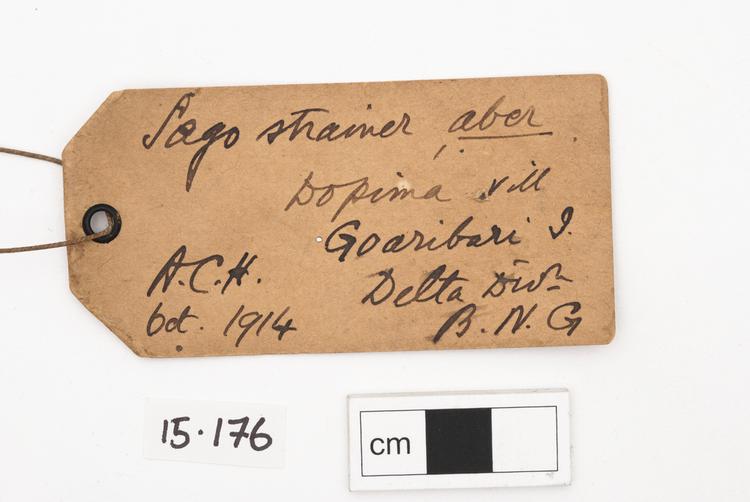
Basketry sago strainer of conical form, tied off at the closed end.
Sago Strainer, Kiwai People, Goaribari Island, Gulf Province, Papua New Guinea. Like many other parts of New Guinea’s densely-forested southern coastal floodplain, the environment of the Papuan Gulf is impractical for the long-term cultivation of many of the tree crops relied upon by people elsewhere in the Pacific. The Sago Palm (Metroxylon sagu) is an exception, however, as it is capable of adapting to the Papuan Gulf’s vast seasonal changes in water level. For the Kiwai people, therefore, the soft and starchy inner heartwood of the sago is a nutritious, easily harvested and abundant source of carbohydrates. This woven tool is vital for processing the sago: The sago paste is first separated from the outer bark and the fibrous pulpy pith of the palm’s trunk by greatly diluting it with fresh water, and then strainers such as these enable the sago paste to be thickened and separated from the excess water, which simply runs out of the holes. Leaves. Early 20th Century. Formerly in the private collection of Prof A. C. Haddon, and very likely acquired by him from Gunnar Landtman, who collected among the Kiwai in 1910-1912 and made a large collection for Haddon.



